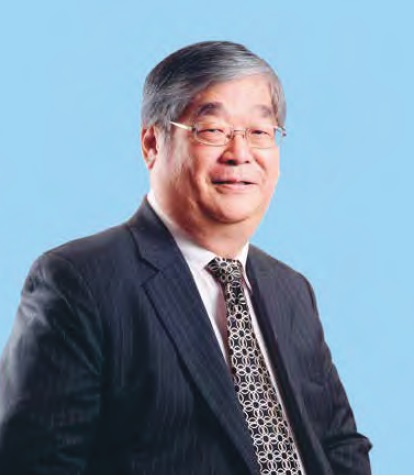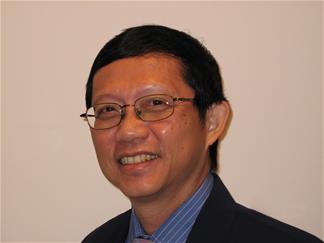In 1946, Singapore was entrusted by the International Civil Aviation Organization (ICAO) to provide air traffic services for the Singapore Flight Information Region (FIR). Today, as a leading Air Navigation Service Provider (ANSP), the Republic is responsible for the safe and efficient movement of over 670,000 flights in this area of airspace every year. And the numbers are on an upward trend amidst a global aviation landscape that is also rising in complexity.
As our nation forges on, Bridging Skies takes this opportunity to reflect on Singapore’s journey to becoming a world-class ANSP.
This five-part Beyond Our Blue Skies series chronicles Singapore’s air traffic management (ATM) evolution through the eyes of the men and women who make it happen. From conversations with seasoned veterans to fresh blood – across air traffic control officers, engineers, trainers and support officers on the ground – we capture personal accounts and heart-warming anecdotes alongside the many important stories and milestones in Singapore’s ATM journey.
As their stories illuminate the philosophy behind Singapore’s investments in “man”, “machine” and “method”, you will also discover the passion, camaraderie and determination that have put Singapore in good stead to bring air traffic management to the next level – for the nation, the region and beyond.
Navigating Through Change and Challenge
For this debut feature, we sat down with two pioneers who continue to lead CAAS’s ongoing transformation: Mr Kuah Kong Beng, former Director of Air Traffic Services, and Mr Lo Weng Kee, Deputy Director of Aeronautical Telecommunications & Engineering (ATE).
As they share memorable stories from their notable careers, one gains a better appreciation for the strides CAAS has taken over the last five decades to make Singapore a leading ANSP on the global stage.
Stark contrasts between then to now abound, such as controllers talking frantically on radios to guide 55,000 flights a year back in Paya Lebar Airport in the 1970s, to using the advanced computers of today to manage over 360,000 flights a year in Changi Airport. Since its inception in the early 1980s, ATE’s staff strength has grown from four to 100 today, air traffic control officer (ATCO) numbers have risen four-fold from under a hundred to almost 450, and unprecedented collaborations with neighbouring countries have improved our coverage of flights especially of those areas away from land.
Nurturing World-class Talent
Kuah was performing national service when he answered a job ad for an ATCO back in 1972. He had no clue about what this profession had in store for him. “I thought it meant directing planes on the tarmac with coloured paddles!” Kuah recalls with a smile.
At that time, Paya Lebar Airport was struggling to handle burgeoning passenger volumes of 1.7 million, almost double what it was originally built to accommodate in 1955. Kuah enrolled in the new training programme designed to cater to rising demand for ATCOs to handle the additional air traffic.

Mr Kuah Kong Beng, Former Director of Air Traffic Services
“Think of the ATCO as a ‘traffic policeman’ for aircraft, and the job is to ensure safety and efficiency of aircraft movements by guiding them during take-off and landings at the terminal area, movement in and out of our airspace, and transitioning to other regional airspaces,” Kuah describes.
“The ATCOs’ primary concern is safety, but they must also direct aircraft efficiently and minimise delays.”
Of the 32 recruits in Kuah’s original batch, only six remained 10 years after they signed up. “The job of an ATCO is very stressful, you have to be able to multi-task, plan ahead, work well under pressure and have sharp instincts to make split-second decisions in real time,” Kuah points out.
However, Kuah stayed committed to the job for 45 years. Today, his wealth of experience makes him widely recognised as one of CAAS’s international ATC experts and he actively contributes to making new ATM solutions a reality for the region.
In 1986, Lo chose to transition from a seven-year engineering career with a US-based multi-national company to the then Operations Division at CAAS. He was drawn to the promising growth industry of civil aviation and an organisation he felt he could build a long-term career with. As one of its pioneers, Lo has witnessed ATE’s responsibilities grow considerably through the years.

Mr Lo Weng Kee, Deputy Director of Aeronautical Telecommunications & Engineering (ATE)
“ATC comes up with the operational concepts and ATE’s function is to implement and maintain the systems and facilities for them,” Lo explains.
“At the beginning, we relied on an external maintenance contractor and consultant for everything. Now we handle almost everything ourselves, from contracting maintenance activities to management of projects. Besides navigation, we now take care of maintenance of communications, surveillance and ATM systems. We are responsible for maintenance of mechanical and electrical facilities as well as estate management of the buildings related to ATC too,” Lo shared.
“In the last few years, ATE has also been progressing from being a ‘smart’ buyer of technology to researching and developing our own solutions. For us to grow our capabilities, we need to build up our own expertise.”
The career progression of Kuah and Lo typify the investment CAAS consistently makes to nurture talent. And how the skills and roles of our ATM professionals have evolved through the years to meet the requirements of Singapore’s expanding capabilities as a world-class ANSP.
Nowadays, there are opportunities for ATCOs to broaden their horizons and step up into management, international relations, project development and policy regulation work.
“We want them to go overseas to gain experience,” Kuah says of today’s ATCOs, “If your neighbours are able to do as well as you, you are also more efficient and successful. Controllers must look at the big picture, not just for the success of Singapore, but also the region and the world.”
From Old World Analogue to a Digital-driven Future
By the time Changi Airport opened in 1981, annual passenger numbers had more than doubled to 4.3 million from the time Kuah first joined as an ATCO. CAAS’ solution was to leverage on computer technology and introduce the Long Range Radar and Display System (LORADS) to manage the increased traffic volume.
“With the old system, we had to talk constantly on the radio, remember aircraft call signs by writing them on paper,” Kuah explains. “The old analogue radar could also be blocked by bad weather and we would lose sight of the aircraft.”
”With LORADS, we just needed to key data into the computer and calculations would be automatically generated. We were able to see and control multiple aircraft on one screen, greatly increasing our handling capacity, making work easier and significantly reducing the risk of human error.”
Lo adds, “Before LORADS, controllers had to hand-hold the pilots on the approach and landing. Now, pilots follow standard procedures and controllers monitor and intercede during deviations.”
Subsequent upgrades to LORADS II and III in 1996 and 2013 respectively, proved to be just as crucial to maintaining Singapore’s edge in ATM. LORADS II was a vast improvement with greater memory capacity and built-in safety features such as the Traffic Conflict Alert System which gave a warning if aircraft were flying too close to each other.
As one of the most advanced ATC systems in the world, LORADS III took our capabilities to the next level. Besides friendlier user interfaces, LORADS III is able to produce a more complete air situation picture for ATCOs with its new Multi-Sensor Tracking capability which draws on inputs from various surveillance sensors. The LORADS upgrades serve as a prime example of CAAS’s philosophy of consistently investing in technology to continuously enhance its ATM capabilities to meet the ever-growing needs of the aviation industry.
Collaborating for the Betterment of Regional Aviation
The full potential of people and technology cannot be harnessed without the right methods in place. CAAS actively engages and works closely with our neighbouring states to implement strategies that guide collective ATM actions for the betterment of the region.
“We are recognised in the international arena as a leader in aviation because we constantly drive positive change and progress,” Kuah explains. “Whatever solution we propose is for the benefit of everyone in the region, not just for Singapore.”
CAAS has helped to implement a number of such initiatives. One involved re-structuring routes in the South China Sea into parallel, unidirectional routes. Another initiative introduced radar and vertical separation to optimise spacing between aircraft. These plans have significantly increased the safety and capacity of flight routes.
Lo highlights the noteworthy collaboration between Singapore and its neighbours to enhance coverage and thereby safety and efficiency of air traffic in the region. “We connect and communicate with facilities in our neighbouring territories to extend ATM coverage by forming a chain. With the support of ADS-B coverage across countries, it has enabled all parties to see far beyond radar coverage so that controllers can see what is coming and have more time to prepare."
Shaping a Smart Future for All
“ATE is excited about developing its own technology centre for R&D and software development. We intend to eventually build up our in-house expertise,” Lo responds when asked what developments lay ahead for them in the near future.
“We’re collaborating with MITRE Asia Pacific Singapore (MAPS) on a joint research initiative to develop a Smart Tower concept of operations for Changi Airport,” Kuah shares.
The Smart Tower concept envisions a completely digitised real-time view of the aerodrome from state-of-the-art digital camera systems. ATCOs are empowered with access to advanced surveillance and information tools to manage live air traffic, all from a remote location that is not necessarily close to the runway.
Kuah explains how this enhances situational awareness, “Today, if you want to see into the distance, the controller uses binoculars, and then describes what he sees to another person. The other person listens and assumes the picture from the information provided. With Smart Tower cameras, you can zoom in and everyone sees the same picture on large monitors.”
The Smart Tower also increases visibility and improves line-of-sight. The use of night vision or infra-red technology is far superior to human eyesight during hazy, low light or night conditions. The flexible and multiple camera placements allow visual surveillance of aerodrome areas that may be located far away or blocked by buildings.
“Eventually we will have three runways at Changi Airport with several teams of controllers,” Kuah reveals. “With a Smart Tower, we can integrate all into a single location for better coordination and teamwork. This gives you the flexibility of staff deployment and improves operational efficiency and safety.”
Both Lo and Kuah are optimistic. They feel that with strong support from the government and neighbouring regions, the aviation community as a whole will have a bright future beyond our blue skies.
In our next story, we speak to the men and women in various capacities of ATM work. We will share a unique glimpse of life in the CAAS family -- the uncommon camaraderie, palpable passion and sense of family and community that have come to define the espri de corps at CAAS.